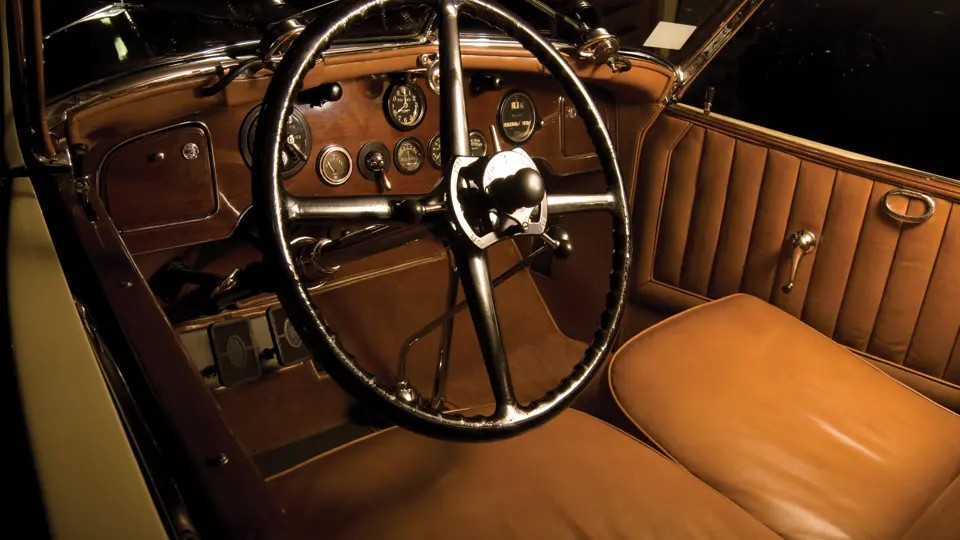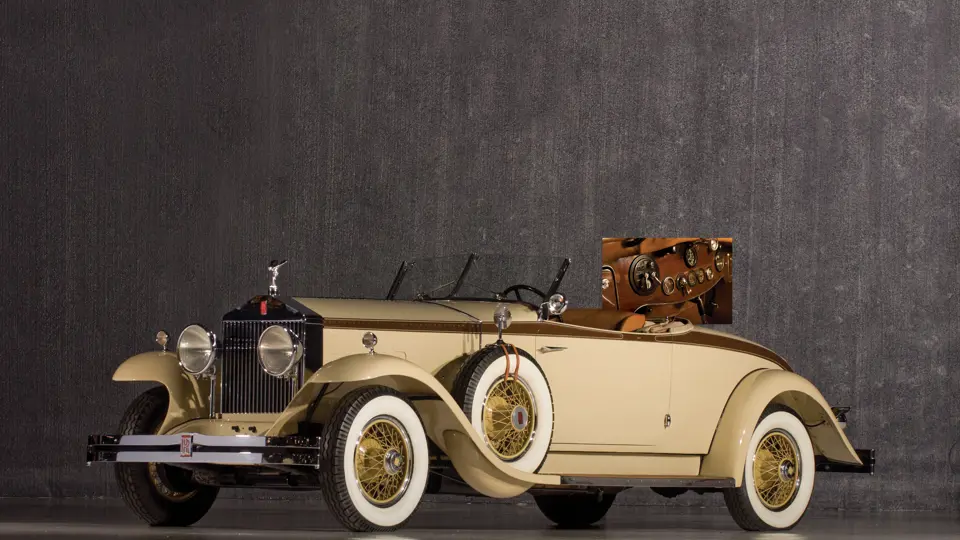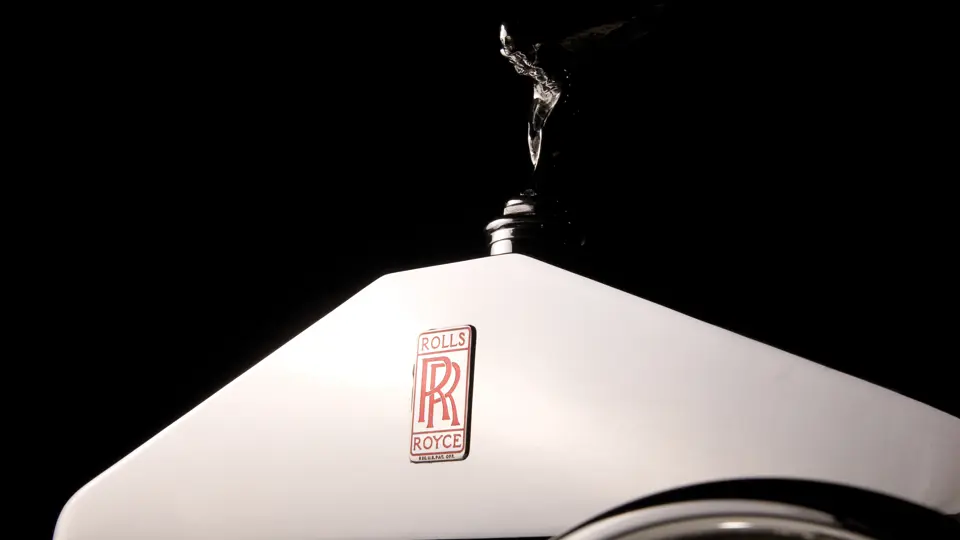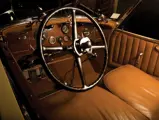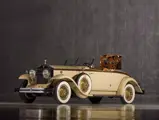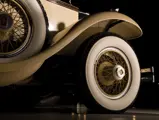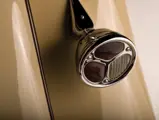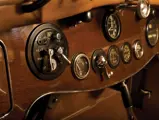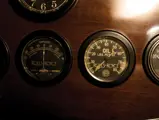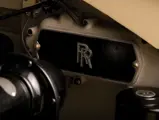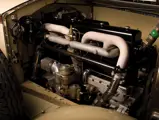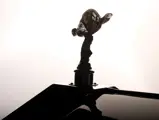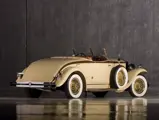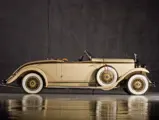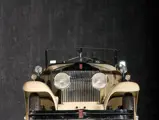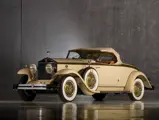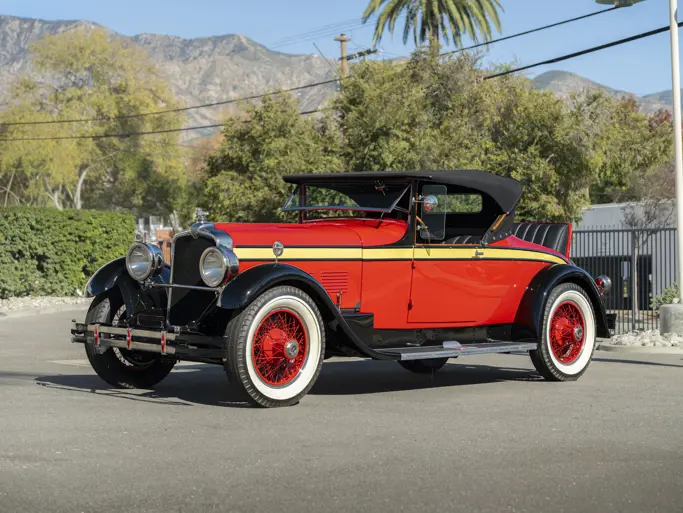113 hp, 7,668 cc inline six-cylinder engine, three-speed manual transmission, live axle suspension with front semi-elliptic leaf springs and cantilevered rear leaf springs, and four-wheel servo-assisted drum brakes. Wheelbase: 146.5"
- Fine original Henley Roadster coachwork mounted in period to original Springfield Chassis
- Part of two prominent collections for 25 years
- One of less than ten known Henley Roadsters
As a direct descendant of the landmark Silver Ghost, the Rolls-Royce Phantom I was launched in May 1925. Sir Henry Royce felt that the Silver Ghost chassis was adequately robust, and he was not easily persuaded that an all-new chassis was actually required. Instead, further improvements were made to the existing chassis design, marking a process of careful technical advancement over change for its own sake.
For the most part, the Phantom I chassis was identical to that of the Silver Ghost, and it was offered in 143.5- and 150.5-inch wheelbase lengths. The Phantom I transmission was also the same as before, except that the old cone clutch was now replaced with a new, single dry plate clutch, which was conducive to quieter and smoother operation.
It was not long before the new Phantom was subjected to speed tests at Brooklands; the results were not in keeping with the reputation of Rolls-Royce for superior performance. When carrying average open touring coachwork, timekeepers confirmed that the new model was not capable of a top speed equal to that of the 1911 London to Edinburgh version of the Silver Ghost.
Rolls-Royce officials worked to remedy the situation almost immediately. The idea was to offer a mildly tuned alternative to the standard engine. However, there was the risk of an increase in weight. So, a Phantom chassis was fitted with a lightened Barker touring body. Unfortunately, even with the lightweight coachwork, the Phantom still did not measure up.
Under strict orders from Rolls-Royce designer Ivan Evernden, another touring body was constructed following his design specifications. Evernden did not compromise on quality but neither did he hesitate to design a very light body. On yet another test at Brooklands, Rolls-Royce achieved success with the Evernden-designed lightweight achieving over 89 mph.
Utilizing the same design, lightweight bodies by Hooper and Jarvis were fitted to new Phantoms for further trials. Royce had suggested making changes to the inefficient radiator in the interest of aerodynamics, but several people at Rolls-Royce opposed that. The logic was that despite the grille’s lack of aerodynamics, it was instantly recognizable as a Rolls-Royce trademark and therefore essential to the brand and image of the company.
The well-established Brewster firm of coachbuilders had executed many designs for Rolls-Royce and its clients, so when Rolls-Royce purchased the American coachbuilder Brewster and Company in 1926, not only was the British company assured of high-quality bodies built to Crewe’s exacting standards, it was also assured of a coachbuilder familiar with Rolls-Royce’s reputation as the manufacturer of the world’s best cars.
Preston Blake, a prominent Connecticut-based Rolls-Royce collector, owned this example for the 18 years before it became a part of the vendor’s collection in 2003.
Springfield chassis S303LR carries with it an extensive and interesting ownership history. It was bodied originally as a Newmarket four-passenger convertible sedan when sold new in 1929 to its first owner, A.V. Frost of New York City. At some point in the 1930s, the original Newmarket body was removed, and a Picadilly Roadster body (which had been originally installed on sister chassis S140FR) was mounted. Finally, in 1940, S303LR received its Henley Roadster body, installed at the factory. Believed to carry number 6003, it must have been removed from another chassis. Since all the original Henley roadsters were first installed on Phantom II chassis, it is almost certain that the body now carried by S303LR was removed from one of these later Phantom II chassis.
Such movement of coachwork from chassis to chassis was not uncommon at the time. Many Rolls-Royces had been purchased by wealthy older patrons. Their cars tended to be little used, well cared for, and to carry heavy, relatively unattractive formal coachwork. The factory, desperate for sales, would readily accept such cars back in part exchange on a new sale. Once in inventory, however, their heavy formal coachwork looked old fashioned and was most difficult to sell. Roadsters and other sporting bodies tended to have been ordered by younger clients and driven harder. It didn’t take long for the factory to realize that remounting the sporting bodies on the excellent low mileage chassis taken on trade resulted in a very good and highly saleable car.
A full, professional restoration was performed on S303LR approximately 25 years ago. As offered today, it continues to present very well overall, notwithstanding some cracking paint at the rear and an older convertible top, as noted during a recent inspection.
As offered, this distinctive Rolls-Royce also comes complete with a remarkably detailed ownership history. Carefully stored and well-maintained, this Brewster-bodied Phantom I Henley Roadster is a superb example of a very rare, sporting and sought-after Rolls-Royce.





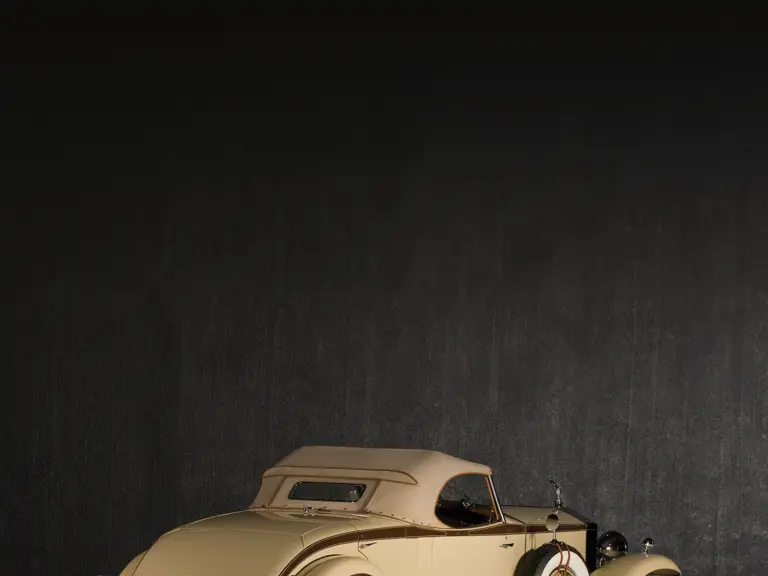



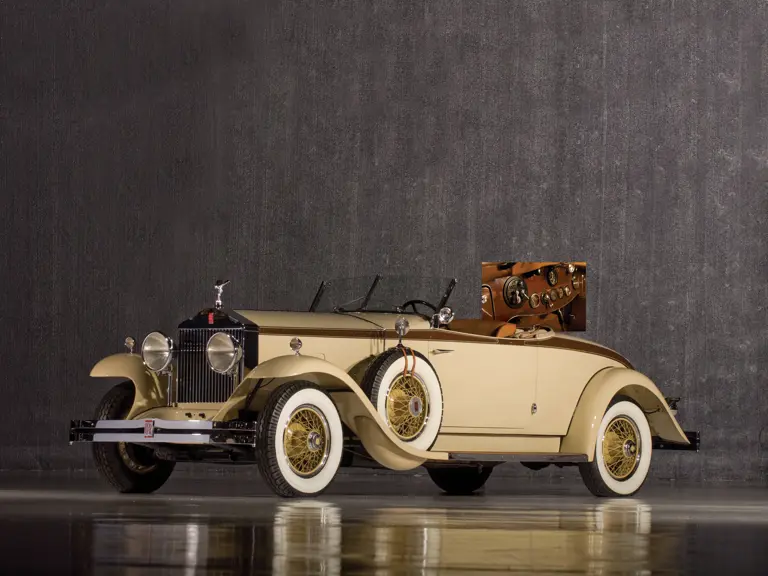
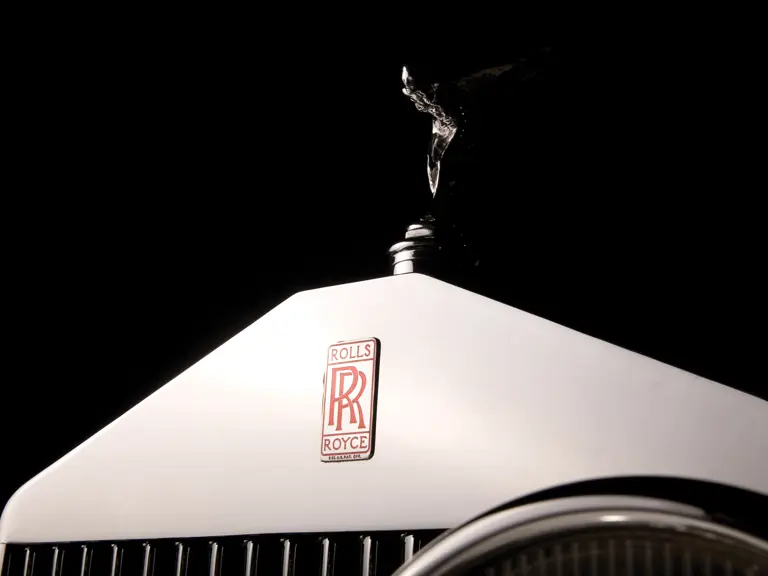


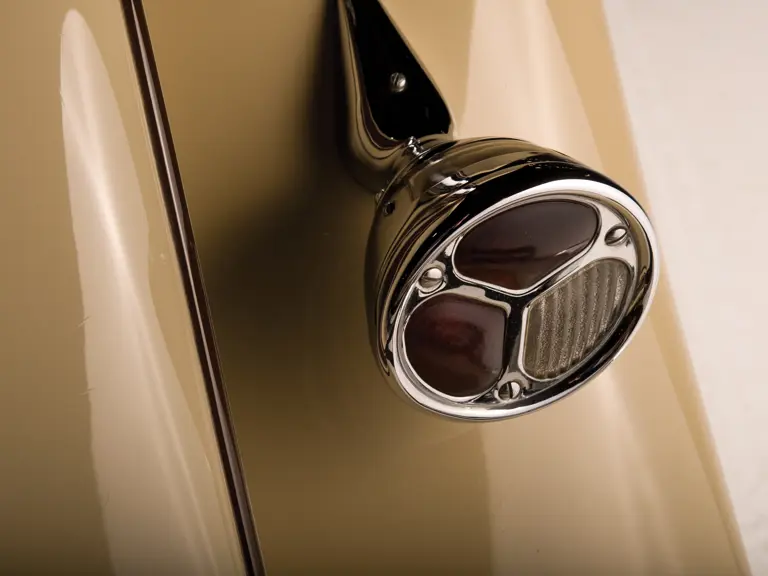
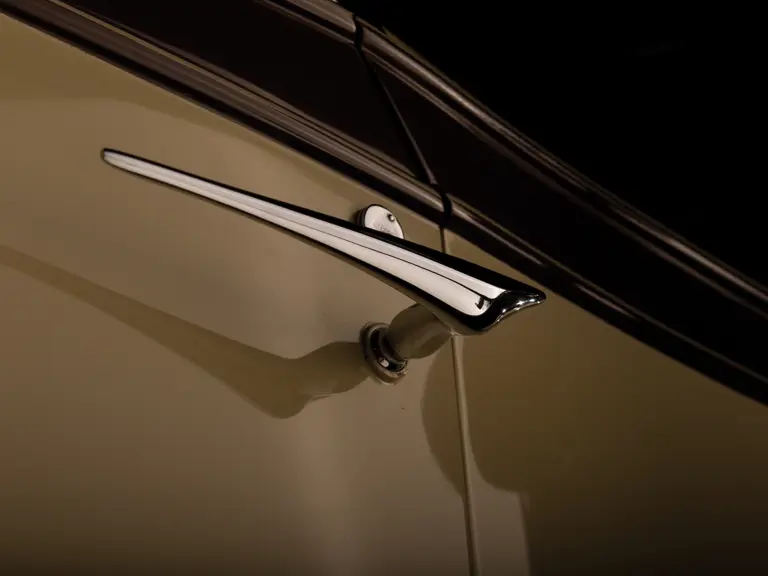
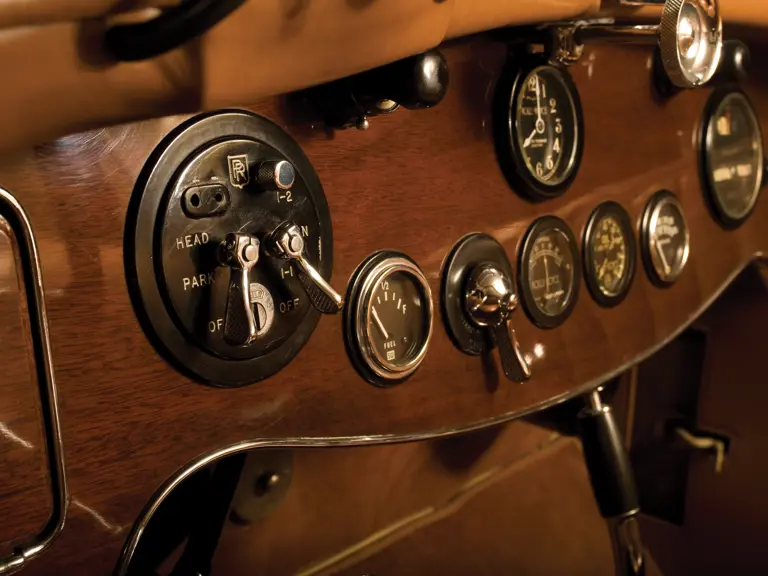

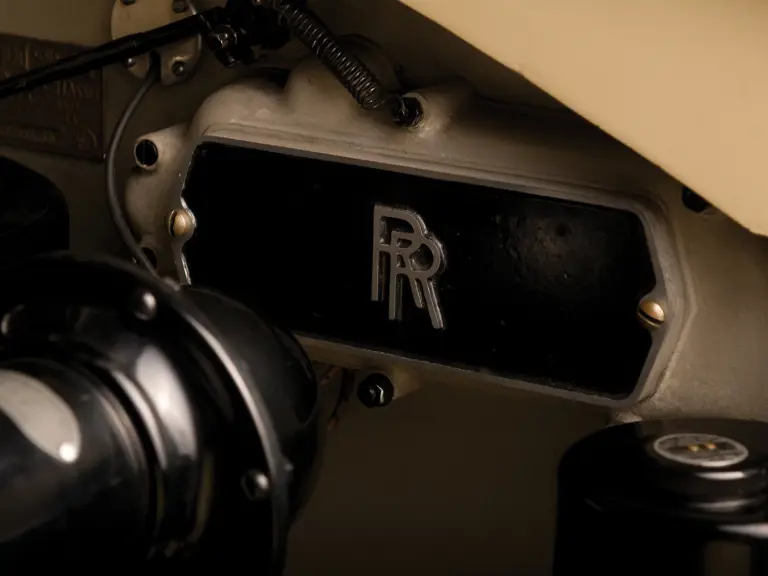
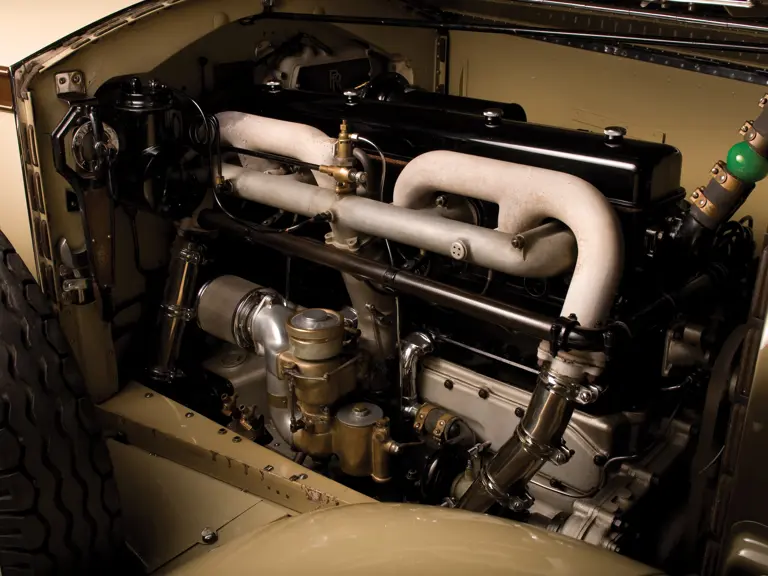
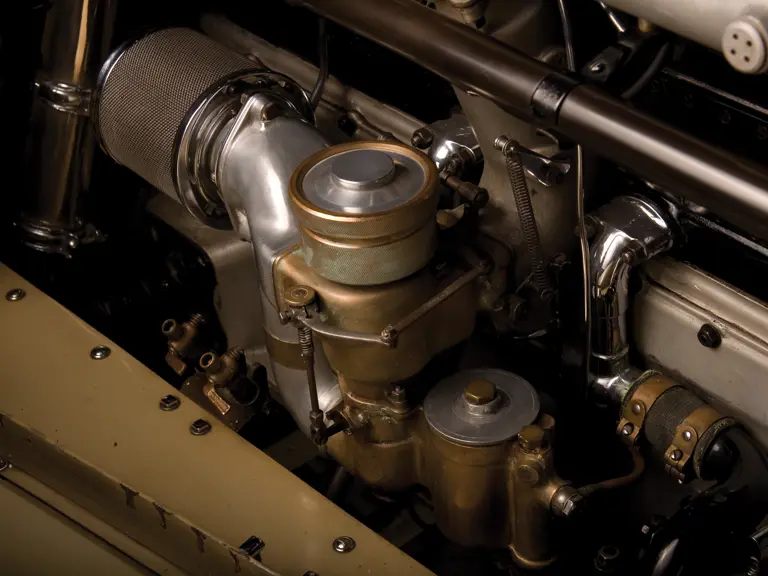
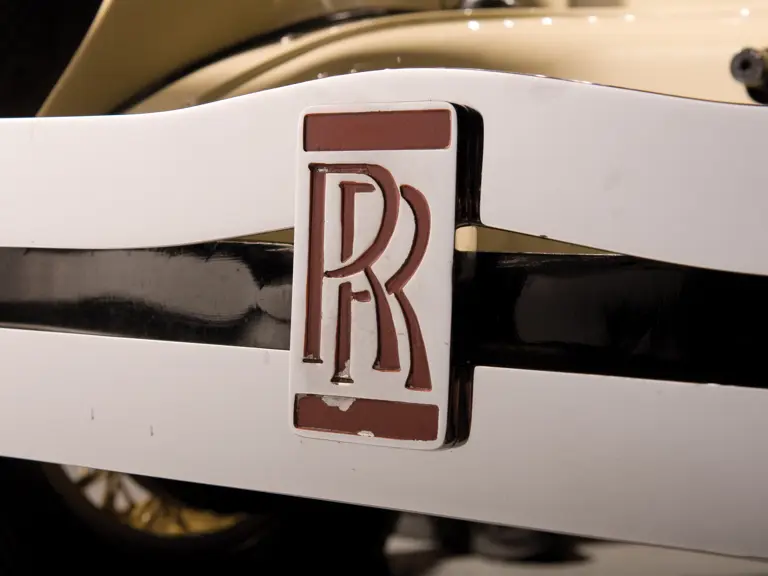
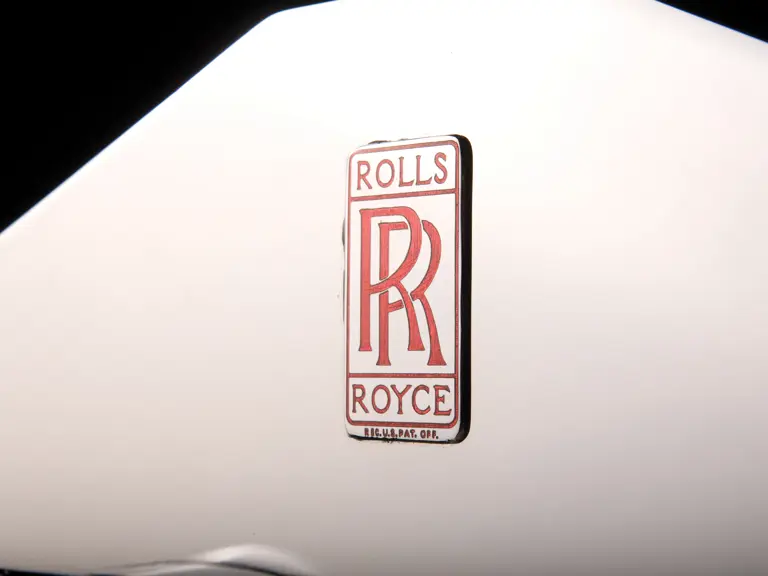

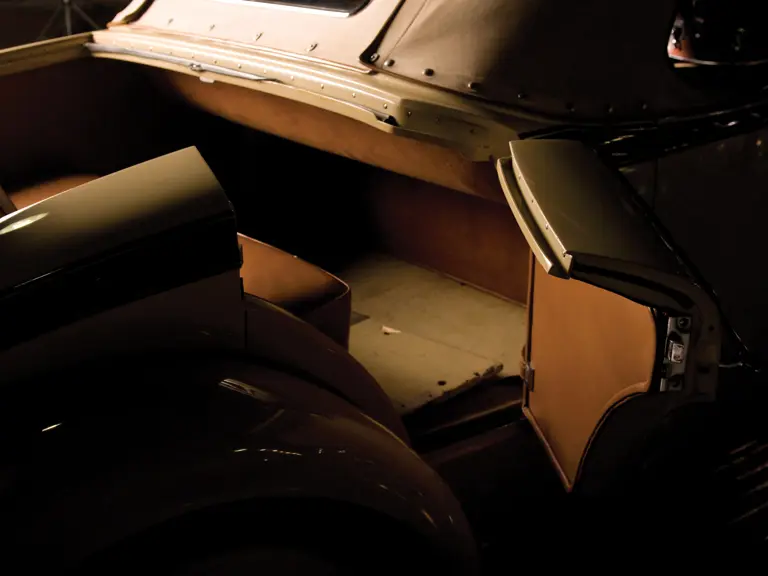


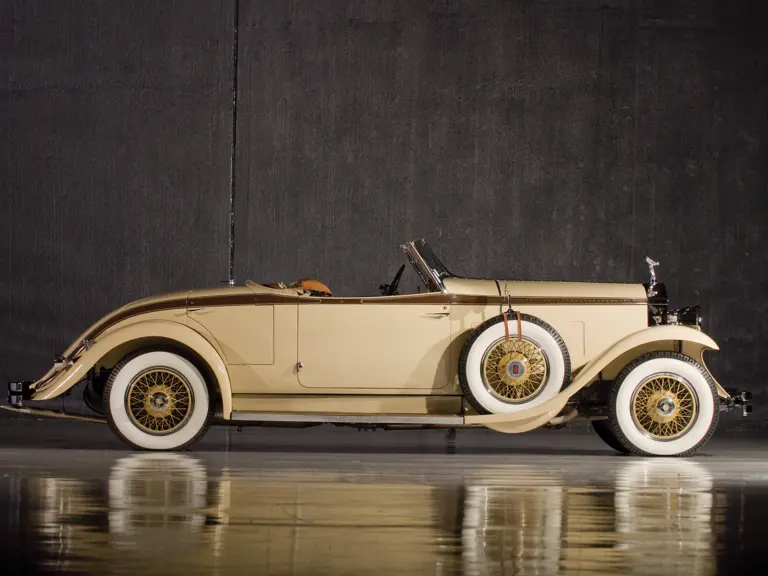


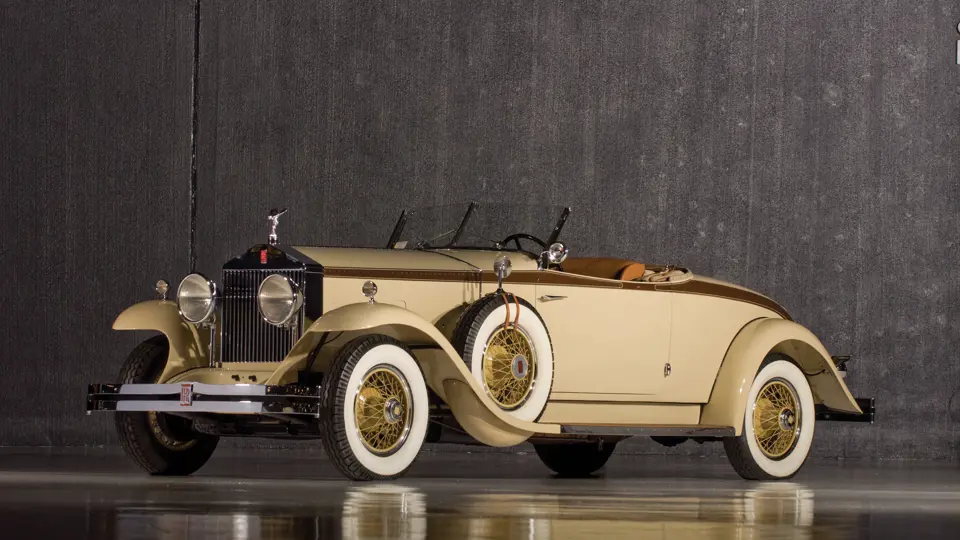
 | Michigan
| Michigan
